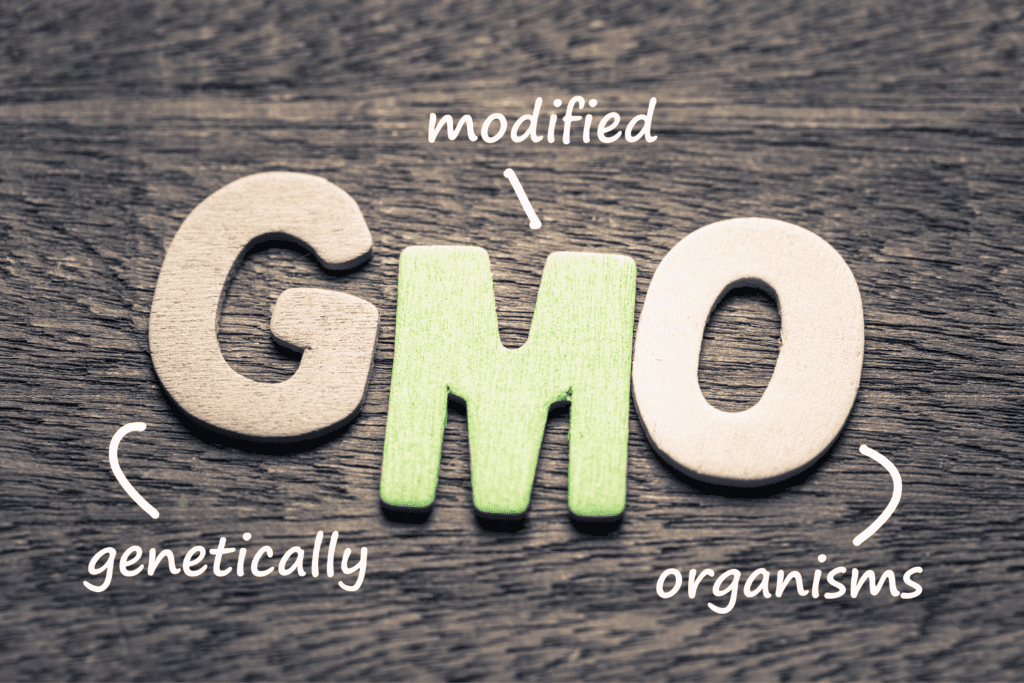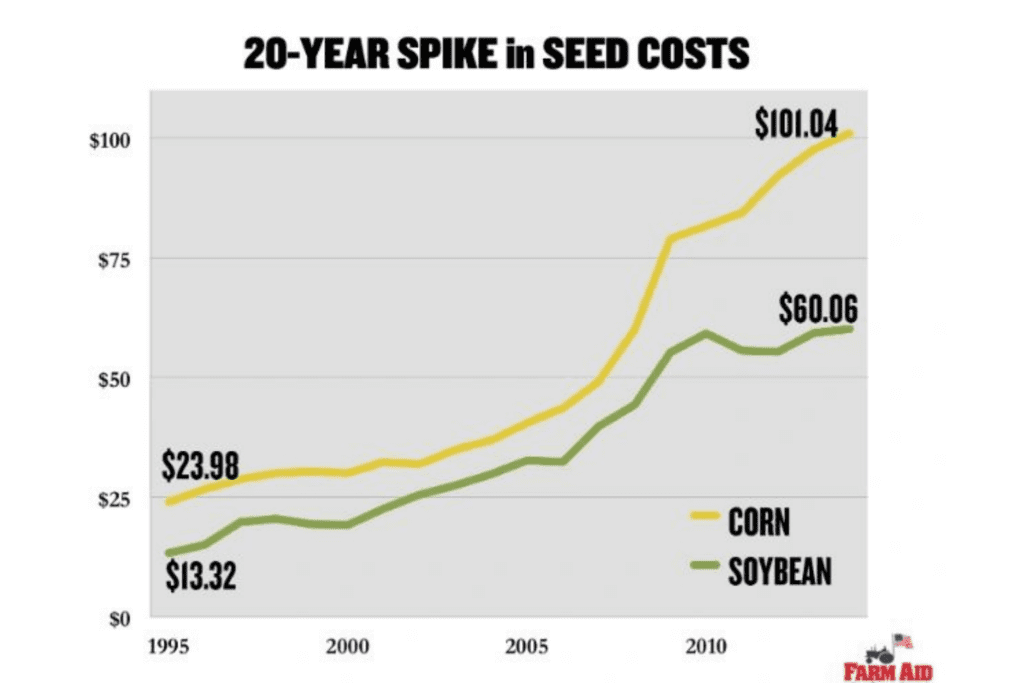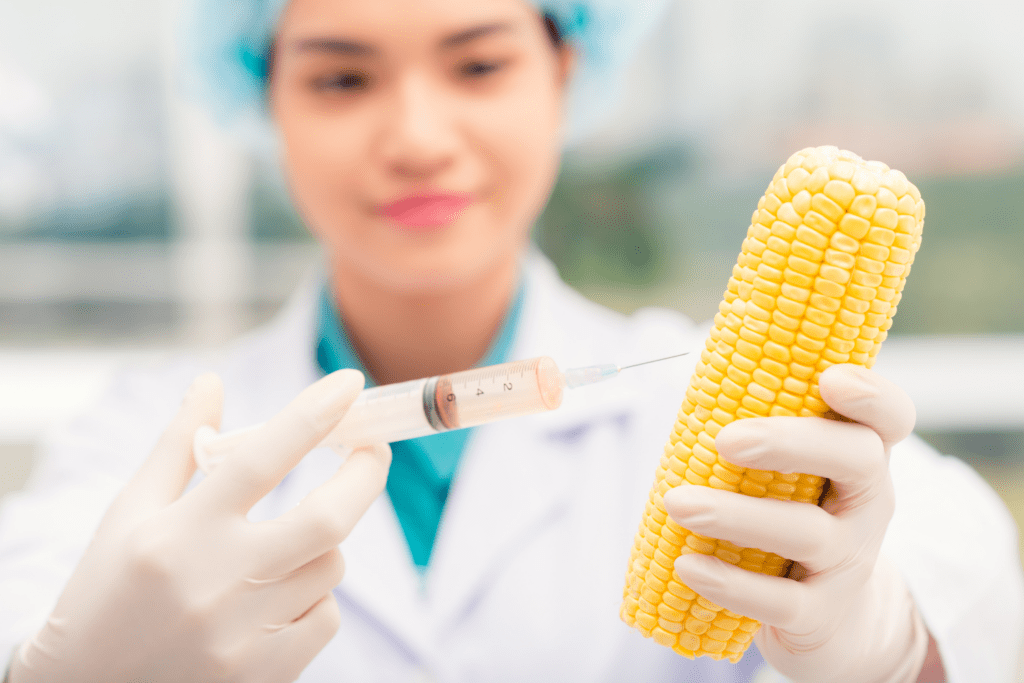
A while back I was talking with a friend who works for one of the top four mega agri-business firms, and the topic of GMOs came up. Now this guy isn’t a scientist (he’s an architect), but he’s really bright and in general I respect his opinions. He gave me a primer on the origins of GMOs, and then a very reasonable sounding dissertation on why GMOs are perfectly safe to eat, and that the general public has been grossly misinformed on the perils of genetically modified foods (I’m pretty sure all new-hires at this company – from janitors to architects – get the Kool-Aid in their new hire training).
In addition, my friend asserted that there’s no way for conventional farming methods to feed the earth’s 7.5 billion humans (and growing), as well as the livestock used to feed those humans; that in fact GMOs were actually safe and good for mankind. But the conversation did get me thinking. Up until that time I didn’t eat GMOs because… well… they were bad, maybe even dangerous… weren’t they?
First things first, a definition is in order. At a very basic level, a GMO (genetically modified organism) is any organism whose genetic material has been altered using genetic engineering techniques. A wide variety of organisms have been genetically modified, both plants and animals. Here in the United States, we only have eight approved genetically modified crops: corn, soybeans, cotton, canola, alfalfa, sugar beets, papaya, and squash. Over 90% of corn, soybean, canola, and sugar beet crops in the US are GMO, with the majority of going to animal feed. You may be thinking to yourself, “gee, I don’t really eat a lot of corn, soybeans, canola and sugar beets,” yet the insidious fact is that these GMO crops find their way into a huge proportion of our processed foods (think high fructose corn syrup, canola oil, soy, etc.).
In addition to crops, animals are also being genetically modified. Canada has already approved the sale of genetically modified salmon (no thanks), and according to AquAdvantage (the company producing said salmon), the FDA has recently lifted it’s import restriction, making way for the first GMO animal in the US market.
As I ponder the “safety” of eating GMO foods, I realize that my main concern is less the fact that these crops are “Franken-foods” (a legit concern), but my main objections is WHY we have GMOs in the first place… and it basically boils down to economics and very large-scale industrial farming. Since the commercial introduction of GMOs, the seed industry has undergone drastic consolidation. Today, just four companies control almost 60% of the seed market. For certain crops, the market is even more concentrated. The “big four” seed companies – Monsanto (owned by Bayer out of Germany), DuPont, Syngenta (owned by ChemChina) and Dow – own 80% of the corn and 70% of the soybean worldwide market. This in and of itself is pretty scary, four companies own 60% of all seeds… as in they OWN the seeds. These seeds are patented, they are the company’s intellectual property… and not surprisingly seed costs have more than quadrupled in the last twenty years.

Next let’s discuss a lovely phenomenon known as “genetic drift.” Many plants are pollinated by insects, birds or wind, allowing pollen from a GMO plant to move to neighboring fields or into the wild. Imagine a scenario where Farmer Joe – at great expense – has a certified organic farm, but the next farm over is an industrial farmer using patented seeds and industrial strength herbicides and pesticides. Farmer Joe has no control over this “genetic drift” (let alone runoff/drift of herbicides and pesticides) and may very well end up with genetically modified crops mixed in with his own organic crops. But wait… it gets better! Farmer Joe is potentially legally liable for having these genetically modified crops on his property (remember that these crops are literally intellectual property of these agri-businesses).
Now we get to the really ugly part, the real “why” we have GMO crops; so we can mega-dose huge tracts of industrial farmland with powerful herbicides and pesticides. One of the most popular of these lovely concoctions is Monsanto’s glyphosate, an herbicide known to most people as RoundUp. From the late 1970s to today there has been a 100-fold increase in the use of glyphosate-based herbicides (GBHs) worldwide, with no slowing of continued growth in sight. In 2014, worldwide usage of glyphosate alone was estimated north of 850,000 kilograms (roughly 1.8 million pounds).

When we consume genetically modified crops (or more likely processed foods containing GMOs), we are eating food that has been heavily treated with these herbicides and pesticides. No Bueno. In addition, we are supporting a very nasty ecological practice (chances are you supported this the last time you filled your gas tank… the ethanol in that gas most likely came from GMO corn).
Like many complex issues, one can find studies that “prove” both that GMOs are safe and unsafe, and I strongly recommend folks do their own research. For me GMOs are a hard pass for political, environmental, and health reasons.
What about you? What are your thoughts? Join the conversation and let us know why you do or don’t eat genetically modified foods.
